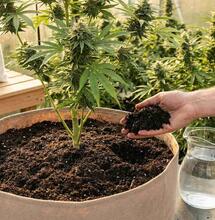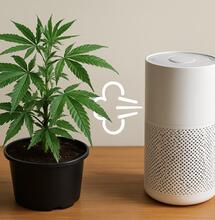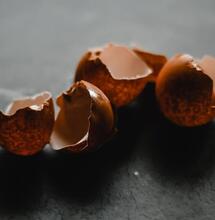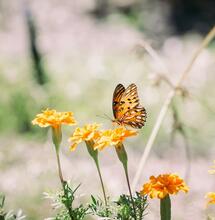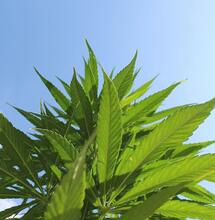How to Use Baking Soda in Your Cannabis Garden
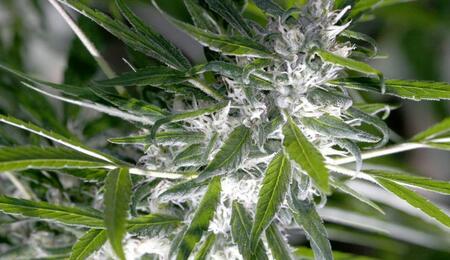
Baking soda, with its myriad applications, is the next kitchen product featured in our series on natural home remedies for Cannabis growing. In this guide, we explore how baking soda benefits cannabis gardening—from balancing soil pH to deterring pests and keeping your indoor grow clean.
Baking Soda & Cannabis
Many folks are aware that baking soda (sodium bicarbonate) is multifunctional in the home and garden. The most common non-baking application is to place an open box in the fridge and freezer to absorb pesky food odors, but the helpful quality of baking soda extends far beyond this simple trick. In fact, many issues that plague Cannabis growers can be resolved by using baking soda.
Before applying sodium bicarbonate to your Cannabis crop, keep in mind that any plants that have advanced past the first few weeks into their flowering cycle should usually not be sprayed or sprinkled with anything, as the buds are very absorbent and may transfer any treatments to the consumer. Vegetating plants or those that are only in the early phases of flowering may be treated, although some residue may need to be rinsed from the foliage to prevent build-up.
An easy spray of baking soda, dish liquid, vegetable oil and water can combat mildew, fungus, gnats and more. If you need any help regarding pests during your grow, be sure to check out our 2022 article on pest control.
Spray for Combating Powdery Mildew
For those suffering from constant attacks of powdery mildew, baking soda offers an effective ingredient for a quick and easy treatment spray. Simply combine one tablespoon each of baking soda, dish washing liquid and vegetable oil (for surfactant purposes) with one gallon of water.
Spray your outdoor ganja plants weekly, aiming for overcast days in order to prevent the sun from burning the foliage; apply to indoor plants after turning off the lights for a time period sufficient for letting them cool down, then turn the lights back on when the plants are almost dry. It may also be a good idea to shake the excess moisture off of the foliage before turning the lights back on or putting plants back outdoors under direct sunlight.
If you are worried about dosage or wish to use a lighter version of this spray, combine one gallon of water with one tablespoon of baking soda and a half-teaspoon of liquid soap instead of using the above concentration.
Excess spray may be applied to vegetable gardens, promoting healthy squash and cucumber plants, or non-Cannabis flowers such as impatiens, zinnias or lilac bushes.
Control Leaf Fungus and Soil Gnats
First, remove the worst-affected foliage from your plants. Combine four teaspoons of baking soda and one teaspoon of castile or otherwise biodegradable soap - such as Dr. Bronner's - with a gallon of water. Combine thoroughly and treat affected foliage and soil as needed.
Another method is to stir together a gallon of water, a tablespoon of baking soda and two tablespoons of vegetable oil, then add a half-teaspoon of castile soap to create an anti-fungal spray for Cannabis or tomato plants. Treat foliage regularly until the fungus clears.
Are you still concerned that bugs will kill the weed in your cannabis garden? Read our article on how to disable bugs.
Eradicate Black Spot Fungus
A simple fungicide may be created by mixing four teaspoons of baking soda with a gallon of water. Excess spray may be applied to non-Cannabis plants such as roses or grape vines that are in the early fruiting stage.
Baking Soda for Pest Control
Many insects, especially of the sap-sucking variety, will not be able to tolerate a baking soda spray. Dissolve two tablespoons of baking soda into two tablespoon of liquid soap. Again, an organic or bio-degradable soap is preferable, in order to maintain the natural quality of the product and prevent harm to the environment or local wildlife. Once dissolved, mix in between 250 mL (one cup) and one liter of water, depending upon the sensitivity of your foliage.
Weekly applications may have to be diluted at trial-and-error dosages in order to prevent leaf burn; begin with a weak dose on younger plants and work your way up to a full-strength recipe as they mature. Spray plants as needed, especially after it rains, or once indoor plants have cooled sufficiently. Turn grow lights back on when your plants are dry or nearly-dry. Excess may be applied to vegetable gardens.
Indoor growers or those with an outdoor gardening shed may control insect invasions by sprinkling a perimeter of pure baking soda along windowsills and around plumbing fixtures, under sinks, etc. Carpenter ants, cockroaches and silverfish are just a few interlopers that will not be able to survive crossing through these 'contaminated' areas, helping to maintain clean and pest-free grow spaces.
Weed Killer
If you have an outdoor plot that is plagued by pesky weeds (of the non-desirable variety), you can control their growth in borders and sidewalk cracks by sprinkling a liberal layer of straight baking soda on affected areas. The powder kills existing weeds in addition to choking out new weed growth, although gardeners should exercise caution near Cannabis plants and cultivated grass plots, as the baking soda in your cannabis garden will take out any greenery in its path.
Wet the area thoroughly and keep in mind that this treatment is more effective on actively growing weeds, such as during the springtime or autumn; summertime weeds may be more stubborn and require frequent treatment.
Caterpillar Control
Guerrilla growers with hidden outdoor crops may thwart caterpillar infestations by dusting a fifty-fifty blend of baking soda and regular flour directly onto the plants. As it takes a day or two for the critters to munch on - and consequently die from - the kitchen ingredient combo, re-application may be necessary.
Rejuvenate Foliage or Remove Build-Up from Plants
Accidents happen, and gardeners occasionally find themselves with plants that are coated in some unwanted substance - nutrients or pesticides can be spilled; bad weather, construction projects or other unforeseeable events can coat the plants with something that prevents photosynthesis and transpiration, etc. Sometimes, even hard water may leave deposits on your beautiful green leaves.
To correct this issue, mix a teaspoon of baking soda, a half-teaspoon of clear ammonia and a teaspoon of Epsom salts with a gallon of water. Spray outdoor Cannabis plants with a liberal dose of this mixture, especially if rain is imminent. Indoor plants may also be cleaned in this manner, taking care not to saturate the plants and rinsing them afterward in order to keep foliage fresh. Excess spray may be used to rejuvenate rose bushes.
Soil Testing or Treatment
If you do not have a soil test kit and suspect that your gardening attempts have been thwarted by acidic soil, try this simple test: sprinkle a bit of baking soda onto the dirt in your growing plot when it is wet from a recent rain, or wet it yourself. If the soil/baking soda bubbles, your dirt is acidic (pH <5) and may be the reason that your plants are not growing as desired.
Treating the soil in containers with baking soda will foster a more alkaline environment. Established tomato plants, for example, may be sweetened by sprinkling a small amount of baking soda near their roots - be careful not to apply the product to foliage; only the soil needs to be treated. This method may also be applied as a one-time treatment when plants are first introduced to the soil, although young seedlings may be too delicate to withstand the application. Alternatively, dissolve one teaspoon of the soda in a gallon of water and flush the soil with this solution in order to raise pH levels.
If local beasties such as roaches, silverfish, ants or even rabbits are an issue in your garden, you can treat the soil by simply sprinkling baking soda over the affected plot. Again, do not apply the soda to your plants; treating the soil itself provides sufficient pest control. Creatures such as slugs may be controlled by applying baking soda directly upon the invaders themselves.
If you live near the ocean, your soil may already contain a high salt content. Be mindful of the local pH before applying baking soda in your cannabis garden, as you could potentially drastically alter salt levels to the point where the soil is no longer conducive to good Cannabis growing (pH 5.8 to 6.8).
Non-Plant Applications for Baking Soda
Growers may scrub wet hands with pure baking soda after a long day in the garden for a quick and easy method of removing the layers of grime that can accumulate from a Cannabis garden. In addition, growers' tools such as work sinks, watering cans, nutrient measures, sprayers, scrub brushes, plant pots and other common gardening accessories may be cleaned and deodorized by making a paste of baking soda and water and scrubbing/rinsing thoroughly. This same paste can be used to thoroughly clean tile and grout and flooring in garden prep areas.
Sprinkle a little baking soda inside gardening gloves to keep them fresh-smelling and easy to slip onto hands before lengthy gardening sessions. A poultice of baking soda and a few drops of water can be applied to insect bites from long days of outdoor gardening.
You can also make a simple wood ash polish for stainless steel sinks and fittings from four tablespoons of baking soda, two cups of wood ash (perhaps from the remains of burning leftover Cannabis stalks from your garden, or a fireplace or wood-burning oven) and just enough water to form a paste.
